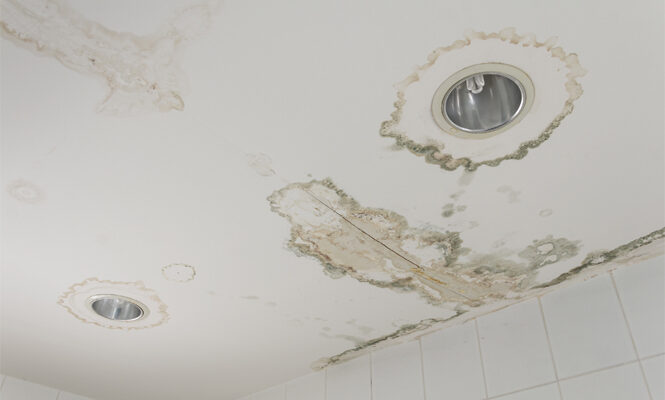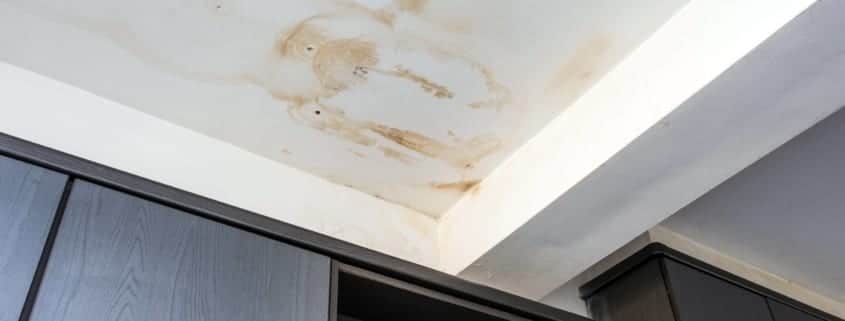Identifying and Solving Water Stains on Wall Surfaces
Identifying and Solving Water Stains on Wall Surfaces
Blog Article
What are your beliefs on Water Stains on Walls?

Water stains on walls are not pleasurable to the eyes. Occasionally it seems almost inevitable to experience water spots on wall surfaces in houses.
House owners staying in moist areas frequently handle the worry of water spots on wall surfaces. But that doesn't have to be the case for you. With all-round as well as precise information on the causes of water stains and punctual fixing procedures, you will certainly always be a step ahead of such occurrences. This article assures to be a handy overview for you.
3 Usual Sources Of Water Stains on Wall Surfaces
In contrast to popular belief, water stains on wall surfaces do not constantly stem from poor structure materials. There are numerous root causes of water spots on walls. These consist of:
Moist
When hot wet air consults with completely dry chilly air, it triggers water beads to base on the walls of structures. When there is vapor from food preparation or showers, this occurs in shower rooms and cooking areas. The water droplets can tarnish the surrounding walls in these parts of your residence and infect other locations.
Moist or condensation affects the roofing and also wall surfaces of buildings. This causes them to show up darker than other areas of the home. When the wall surface is wet, it creates an appropriate environment for the growth of germs and fungi. These may have negative effects on wellness, such as allergies and respiratory problems.
Poor Drain
When making a structure strategy, it is critical to ensure appropriate water drainage. This will certainly prevent water from seeping into the walls. Where the drain system is blocked or missing, below ground dampness accumulates. This web links to excessive wetness that you notice on the walls of your building.
So, the leading reason for wet wall surfaces, in this instance, can be a bad drain system. It can additionally be due to poor management of sewer pipelines that go through the building.
Pipe Leaks
Many homes have a network of pipes within the walls. This guarantees that the pipes are well away from the reach of devastating rats. It constantly enhances the practicality of such pipes, as there is little oxygen within the walls. This discourages corrosion.
A disadvantage to this is that water leak affects the wall surfaces of the structure and also triggers widespread damages. A dead giveaway of malfunctioning pipes is the look of a water discolor on the wall.
Pro Pointer
A houseplant in your house also raises its humidity. If the residence is already moist, you may desire to introduce houseplants with marginal transpiration. An instance of suitable houseplants is succulents.
Water Discolorations on Wall: Fixing Tips
House owners would generally desire a quick fix when handling water discolorations. Yet, they would soon understand this is detrimental as the water discolorations repeat. So, right here are a couple of valuable pointers that will lead you in the repair work of water discolorations on walls:
Final thought
No one wants to have water spots on wall surfaces in their house, it can occur to the finest of us. This write-up offers you utilize, as you currently recognize how to handle this mishap if it does occur.
It is always best to recruit professional solutions to aid deal with the problems in your home.
Sometimes it seems almost inevitable to experience water stains on wall surfaces in residences.
In contrast to preferred idea, water discolorations on wall surfaces do not always stem from bad building products. There are numerous reasons of water spots on walls. The water droplets can tarnish the surrounding wall surfaces in these components of your house and also spread to various other areas.
Here are a few helpful pointers that will lead you in the fixing of water spots on walls:
What To Do About A Water Stain On The Ceiling
Why This is Important
Not only are water stains a cosmetic issue, but they can also indicate that there is a leak in the home that needs to be fixed. Sometimes, this may be the first indicator of a bigger problem brewing or may have been a one time leaky issue. It is important to investigate to make sure it is under control before you possibly have thousands of dollars in repairs.
Identify the Cause of the Water Stain on the Ceiling and Where to Start
It is important to identify the cause of the water stain on the ceiling first so you can fix it. Start first with the roof to see if there are leaky shingles or missing shingles, missing flashing, or weakened seals around roof vents. You may need to get on top of the roof to look or call a professional to check for you. It is possible that water is coming into the home from the roof. So you will want to have the professional take a look to see if this is the issue.
Also, look in the attic to see if there is a pool of water and that will also help you to know if there is water leaking into the home.
Radiator or Air Handler on 2nd floor
In colder parts of the country, there may be a radiator on the second floor. Radiators are used to keep rooms warm in the cold months and do wear out or need replacing. Does the radiator have a pool of water underneath it or any dripping? If yes, this could be the problem and causing the water stain on the ceiling. Check the model of the radiator and see if it is something you can do yourself or call a professional to check the body, pipe, and the valve for leaks.
The same is true for those who have an air handler on the second floor. Did your AC stop working? Or do you see water leaking? The drip pan (if you have one) on an HVAC unit collects the water and it can become clogged and back up. The float switch (again, if you have one) will activate as soon as the water reaches a certain level and shut down the HVAC unit, thus not allowing the water to continue to flow. Make sure the HVAC doesn’t become clogged and checking this monthly is a good idea.
Upstairs Bathroom Can Cause a Water Stain on the Ceiling
Bathrooms are often the culprit as caulking wears out after about 10 years and needs replacing. Is the home older than 10 years? This may be the issue. While checking the caulking in the bathroom around the sinks, toilets, and shower/bath, also check for black mold in the shower. Might as well rule everything out while you are looking for the source.
Other areas to look at are toilets clogging and overflowing. Do you see water near the toilet on the floor? This could be the seal is broken on the toilet and it needs replacing. Also, adding caulk to the toilet to connect it to the floor is a good idea. If the toilet is continuously running, you can shut off the water and do the water meter test.
Write down the number on the water meter and then turn off the water for three hours. When you turn it back on, check the number on the water meter. If it has increased, then you have a leak in the indoor plumbing.
Taking care of these areas is essential as sewer gases can also be escaping. Sometimes these issues will soak the ceiling below and clog in sinks and drains in the shower can also cause flooding in a bathroom.
Put a Drop Cloth on the Floor
With goggles on and gloves, put a drop cloth on the floor. Then, take 3 glasses of warm water and one cup of bleach and mix it together. Set up a ladder and climb up to the stain. Use a sponge that is soaked in the concoction to rub it on the water stain to get it to come off. Take a spray bottle of plain water and spray the stain to get the bleach mixture off. This is important because you want to be able to prime it and paint it. Take a dry towel and rub the stain to help it dry faster. Next, put painters tape around the ceiling if the spot is near the walls. Apply an Oil Based, Stain Blocking Primer
Apply an oil based, stain blocking primer that is mold resistant that matches the ceiling. It is important to put the primer on first so the paint doesn’t soak into the ceiling. If you have a flat ceiling, you can use a paint roller with an extension to apply it. Once the primer has dried, apply the paint. If you have a textured ceiling, a spray on primer might work better.
Choose a Latex or Alkyd Ceiling Paint
The latex ceiling paint is water-based and dries faster than the oil-based paints and also is thicker than wall paint. Make sure that the paint matches the ceiling color. Using a roller, paint it on over the primer and let it dry for up to four hours. Then, apply a second coat and let it dry. The second coat should make the stain disappear.
https://insideandoutpropertyinspectors.com/water-stain-on-ceiling/

As an enthusiastic person who reads on , I was thinking sharing that section was really helpful. Don't hesitate to take the time to distribute this write-up if you liked it. I value reading our article about Water Stains on Walls.
Address leaks promptly. Report this page